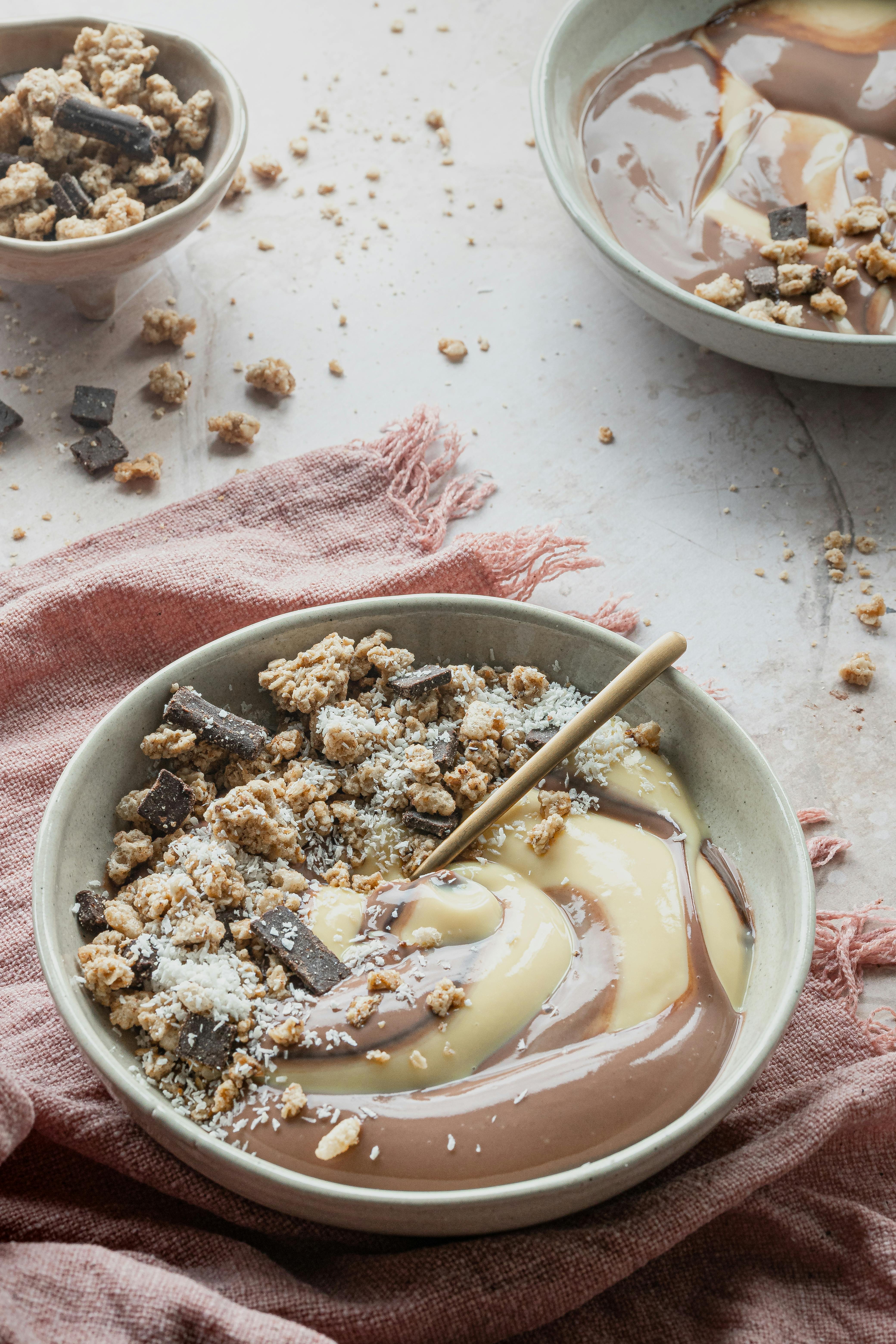Understanding the Keto Diet and Its Principles
The keto diet is a low-carb, high-fat dietary approach that has gained immense popularity for its ability to promote weight loss and improve metabolic health. By drastically reducing carbohydrate intake and replacing it with healthy fats, individuals can enter a metabolic state known as ketosis. This state encourages the body to burn fat for fuel instead of carbohydrates, leading to an array of potential health benefits such as increased energy levels, improved mental clarity, and better blood sugar control.
One of the significant challenges many face while adopting this ketogenic lifestyle is managing sugar cravings, which can often lead to unhealthy snacking decisions. As we explore how to successfully navigate the keto diet in 2025, understanding the role of natural sweeteners, particularly honey, will be crucial. This article will guide you through the implications of using honey on keto and provide alternatives that align with your dietary goals.
We'll dive into the nutritional content of honey, its impact on ketosis, and discuss sugar alternatives that can help you maintain your dietary restrictions while enjoying sweet flavors. By the end of this article, you'll have a comprehensive understanding of how to sweeten your keto dishes without sabotaging your efforts.
The Nutritional Value and Health Benefits of Honey
Honey has long been celebrated for its various health benefits, including its antioxidant properties and potential anti-inflammatory effects. However, for those following a strict keto diet, understanding the nutritional value of honey is essential. A typical tablespoon of honey contains around 17 grams of sugar, which can all but derail your efforts to achieve and maintain ketosis.
Despite its natural status and popularity as a natural sweetener, honey's high carbohydrate content can lead to spikes in blood sugar levels, which is counterproductive for those seeking to manage their blood sugar levels effectively. The glycemic index of honey is notably higher than many low-carb sweeteners, making it less than ideal for strict adherence to the keto diet.
However, honey does contain trace amounts of vitamins, minerals, and antioxidants that offer various health benefits. The challenge lies in using it cautiously to enjoy its flavor while adhering to dietary restrictions. This exploration into sugar's role within the keto framework leads us to assess alternatives that are more compatible with a low-carb lifestyle.
Why Avoid Honey on a Keto Diet?
While honey may seem like a natural alternative, its high sugar content can significantly impact your ketosis. For anyone working to manage dietary intake and maintain keto macros, consuming honey can lead to unwanted weight gain and hinder fat burning. Furthermore, the rapid spike in blood sugar levels can cause energy crashes, which is counterproductive to the benefits of a steady energy supply from fats.
Another consideration is the role of honey in promoting sugar cravings on keto. The more sugar one consumes, the harder it can become to resist further sugar intake. Thus, avoiding honey can help break the cycle of cravings and support a more sustainable approach to maintaining a sugar-free lifestyle. Instead, substituting honey with keto-friendly options ensures that you can enjoy sweetness without compromising your diet.
Some of the alternatives available include ingredients like stevia, erythritol, and monk fruit—each offering a sweet taste without the same carbohydrate load that honey entails. Exploring these options opens up new avenues for sweetening coffee, desserts, and snacks while remaining firmly within the bounds of a ketogenic framework.
Exploring Sugar Alternatives for a Successful Keto Journey
As you navigate your keto journey, discovering effective sugar alternatives will not only satisfy your sweet tooth but also support your health goals. There are numerous low-carb sweeteners available, each with unique characteristics and benefits that align with a low carb diet.
For instance, stevia, derived from the leaves of the stevia plant, offers a no-calorie, low-carb sweetness ideal for those wanting to minimize sugar intake. Erythritol, a sugar alcohol, contains virtually no calories and has a minimal effect on blood sugar levels, making it a favorite among keto enthusiasts. Likewise, monk fruit extract provides a natural sweetness with zero calories, which can be a game changer for sweetening low-carb recipes.
When incorporating these sweeteners into your meals, it’s important to note their sweetness levels compared to sugar, as some can be significantly sweeter which requires careful adjustment in recipes. Understanding the differences in sweetness can help you effectively sweeten keto dishes without compromising your dietary goals.
Moreover, it's essential to consider the potential side effects of sweeteners, particularly with sugar alcohols like erythritol, which can cause digestive discomfort in some individuals when consumed in larger amounts. Always aim for moderation and adjust based on how your body reacts.
Top Low-Carb Sweeteners to Use Instead of Honey
When seeking keto-friendly foods and delicious recipes, several standout alternatives to honey deserve consideration:
- Stevia: A natural sweetener that has gained immense popularity due to its zero-calorie count and negligible effect on blood sugar levels.
- Erythritol: Frequently used in baking, allows for a similar sweetness to sugar without the calories or carbs, promoting stable energy levels and avoiding sugar spikes.
- Monk Fruit: This natural sweetener comes from monk fruit extract and is well-regarded for its sweetness and antioxidant properties, making it a healthy option for those on keto.
Exploring these alternatives not only helps satisfy your sweet cravings but also provides health benefits consistent with the keto diet. As you experiment with different sweeteners, you'll discover how to balance flavors and create delicious low carb desserts that align with your goals.
Sweetening Your Daily Keto Recipes
One of the joys of the keto lifestyle is the ability to indulge in delicious meals while maintaining a low-carb approach. Utilizing keto recipes that incorporate low-carb sweeteners allows for versatility in meal planning. Whether you’re looking to create sweet treats, desserts, or beverages, understanding how to sweeten these dishes effectively is key to expressing your culinary creativity.
When sweetening coffee, consider adding a few drops of stevia or a sprinkle of erythritol for that comforting touch. When it comes to baking, use a combination of almond flour and erythritol to create keto-friendly snacks that offer both flavor and texture without the high carb count of traditional ingredients.
Moreover, experimenting with sweetening your drinks can further enhance your keto experience. From smoothies to herbal teas, incorporating natural sweeteners can elevate flavors while keeping you within your carb limits. Remember, balancing macros is crucial when following a ketogenic approach, so be sure to account for any sweeteners you add to maintain your carbohydrate goals.
As you familiarize yourself with these low-carb cooking tips, you'll find it easier to integrate sweet flavors without straying from your keto meal planning. Making informed choices about sweeteners will help you enjoy every aspect of your meals while maintaining the benefits of keto.
Common Mistakes When Using Sweeteners on Keto
While adopting low-carb sweeteners can enhance your dietary journey, there are some common pitfalls to avoid. Understanding how various sweeteners affect your overall health can be the difference between successfully maintaining ketosis or impacting your results negatively.
One prevalent mistake is relying too heavily on sweeteners, which can re-trigger cravings for sugar and lead to overconsumption of calories. Even though the sweetener may be low in carbs, consuming large quantities can add up quickly, especially with sugar alcohols that can affect digestion. Thus, practicing mindful consumption is essential.
Another issue is incompatibility with meals—some sweeteners can alter flavors in unexpected ways, which might not be favorable. For example, using a baking recipe mingled with erythritol might lead to a cooling sensation that doesn't appeal to all palates. Therefore, carefully consider the suitability of each sweetener in your dishes and opt for taste testing when trying new recipes.
Continued education on how sweeteners influence ketosis, energy levels, and satiety will improve your understanding of how to avoid pitfalls and ensure a satisfying experience on your keto journey. As we wrap up, seeking out tasty alternatives leads effectively into managing dietary restrictions and maintaining a balanced approach.
Managing Dietary Intake and Cravings on Keto
Managing sugar cravings on keto can indeed be an uphill battle, especially during the transition phase into a low carb diet. As your body shifts from burning glucose to utilizing fat, cravings for sweet foods can arise, and how you choose to react will significantly impact your ability to stay on track.
Incorporating healthy fats into your meals can help curb those cravings while keeping you satiated. Avocados, nuts, and healthy oils are excellent sources that fuel your body effectively on keto. Furthermore, dishes rich in fiber are not only beneficial for maintenance but also help keep your hunger levels stable.
Mindful eating on keto is as crucial as meal planning and calorie tracking. Engaging in activities that channel your focus elsewhere can help mitigate the desire for sugary treats. Find hobbies that distract you from cravings, such as cooking new keto meal ideas or exploring low-carb cooking tips.
Additionally, keeping a food diary could be instrumental in recognizing patterns and triggers that lead to cravings, which will allow you to adjust your dietary behavior accordingly. With practice and dedication, these strategies can ease the challenges associated with sugar cravings and enhance your overall keto experience.
Best Practices for Maintaining Ketosis
To ensure that you not only enter but also maintain a state of predominate ketosis, there are best practices to implement into your daily routine. Keeping carbohydrate intake low is central, but alongside that, it's also about maintaining a balance of healthy fats and moderate protein to optimize energy levels.
Staying hydrated is essential, as water retention can affect ketosis. Focus on drinking plenty of water throughout the day, incorporating bone broth, or considering electrolyte supplementation if you're experiencing fatigue. Connecting with the keto community—either via forums, social media, or local meetups—can also help provide support and share new healthy eating habits.
In addition, practicing fasting and keto can lead to enhanced benefits. Intermittent fasting has shown to support ketone production, improve fat loss, and reduce insulin levels. By creating a sustainable routine that brings together meal timing, food choices, and supportive resources, you can enhance your ketogenic journey significantly.
Conclusion: Embracing a Successful Keto Lifestyle
As you've explored throughout this article, successfully navigating the keto diet involves mindful choices regarding sweeteners, the understanding of nutritional content, and maintaining healthy eating habits. By avoiding honey and adopting low-carb alternatives, you can enjoy delicious meals and desserts while achieving your health goals.
Beyond immediate weight loss, the overall health benefits of a well-managed keto lifestyle prompt healthier energy levels, sustained focus, and better blood sugar control. By implementing the strategies outlined, you'll be better equipped to handle cravings, utilize sweeteners effectively, and enjoy the rewarding journey of following a low carb lifestyle in 2025 and beyond.


